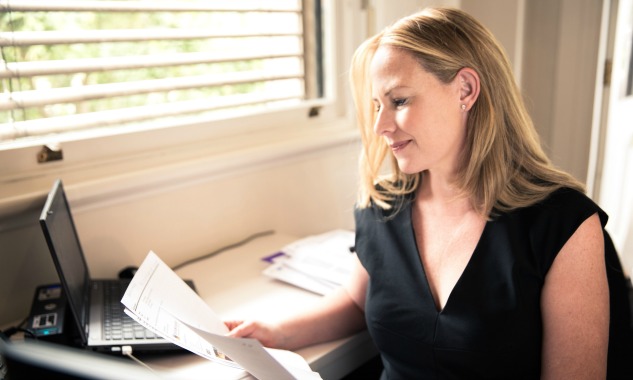Over the past decade I have been working in clinical research, watching with fascination the amount of time and money being poured into developing therapeutics. While the effort was huge, with a high amount of regulation, only a limited number of diseases benefited from the advances – many patient populations are still under-served.
I remember someone senior in the drug-development industry telling me: “What we are doing in clinical trials isn’t rocket science. We tinker around the edges, but things have stayed pretty much the same for 60 years.” I thought this was not good enough, and became intensely curious about discovering the new frontier in drug development.
It became clear to me that patients are the secret weapon in clinical development. For many years, they have been considered as passive participants in the process. However, I was fortunate to work on an initiative with a small group of people who were pioneering the development of patient populations. This was empowering, as many groups started to appear online, providing a space for patients to pool their data to provide large amounts of information to researchers. These groups of patients could generate valuable data that would disrupt the way knowledge about disease was being generated.
When given the chance to join Cure Brain Cancer Foundation, I jumped at it. The foundation’s inspiring team works tirelessly to improve patient survival. Survival is at the centre of everything it does: its mission is to improve survival from 20 to 50 per cent by 2023.
Because of my interest in patient power, I was also excited about working with an underserved community to change outcomes for people impacted by this horrific disease.
Need for change
Things need to change. Brain-cancer survival rates have not improved in more than 30 years. Research into the disease has traditionally been underfunded and under-prioritised, with few advances in drug development or treatment options. There is a limited standard treatment for brain cancer, and we know this works only for certain patients. This combination of factors has resulted in a survival rate of just 22 per cent compared to the national cancer average of 68 per cent, according to the Australian Institute of Health and Welfare.
In turn, this means there is no large number of patients who can mobilise and advocate for change.
We can see the results of the HIV Movement in the 1980s. A large, ignored community of people came together saying enough was enough, demanding change and forcing it through. HIV can now be managed as a chronic illness rather than a terminal disease. The similarities between these two movements are many, and that’s exactly the type of progress we want to see with brain cancer.
Many causes have begun to focus on this kind of approach, and it is starting to make its way into mainstream thinking. In 2012, digital strategist Leonard Kish said: “If patient engagement were a drug, it would be the blockbuster drug of the century and malpractice not to use it”.
Patient and community engagement is core for us at Cure Brain Cancer Foundation, and we’re starting to see now how powerful it is for us to harness the brain-cancer community. Working together, we’re beginning to see real impact.
Brain cancer is now being discussed at the highest level in Australia, with patients feeling empowered by initiatives such as the Senate Select Committee into Funding for Low-Survival Cancers, which we were integral in establishing. That power and togetherness was evident again throughout October and November with Walk4BrainCancer events across Australia.
Clear focus
We are really excited to see more tangible results of our advocacy work over the next couple of months as the community continues to mobilise and say “enough is enough”. Alongside that, we are continuing to fund some of the best brain-cancer research in the world, with a clear focus on improving survival. Engaging the brain-cancer community to have its voice heard, alongside our approach to engage with top scientific minds, makes us a real force to be reckoned with.
In advocating for so much change externally, we’ve worked hard on ensuring we have a team of people in place at the foundation who can deal with that change internally. We’ve recruited an incredible team with a wide range of experience across many industries. That team is so important because it is driving our mission to improve survival day in, day out. Its interactions with our supporters are integral to our efforts to mobilise the community to speak up or take action. The team builds trust, loyalty and respect between our organisation and our community, and I’m hugely inspired by its work.
For our staff members to work to their full capability and deal with any bumps in the road or changes of direction, a clear, communicated organisational strategy is massively important. It is really important they are aligned with the direction of the foundation, our mission and the type of work we need to do to reach it. Having this clarity and transparency means that even if we have to pivot and change direction because of external factors, we all know the end goal.
External factors are not always negative; new advances in research may mean that we need to take a different approach and need to be prepared to adjust our focus.
There has been a tangible momentum shift for brain-cancer awareness over the past couple of years, and I’ve never been more hopeful that we are on the cusp of meaningful breakthroughs. We could not have reached this moment without the work of so many, not just at Cure Brain Cancer Foundation, not just in Australia, but around the world. Now it is up to organisations like ours, decision makers, researchers and ultimately the brain-cancer community to come together and create an unstoppable movement that will truly change outcomes for people who have this disease, not only in Australia and around the world.
Michelle Stewart, CEO, Cure Brain Cancer Foundation.
Third Sector provides high-level content and services for professional development and organisational growth to leaders and senior executives from Australia’s NFP sector and its supporting industries.
























































































































































